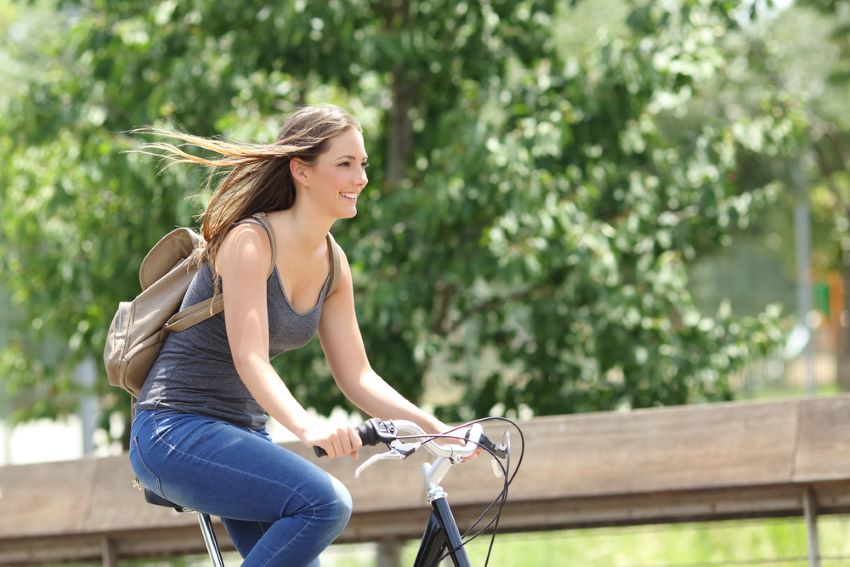


Parent and Express reader Ross Le Brun has serious concerns about the traffic impact assessment which sits alongside the Committee for Education, Sport & Culture's planning application to develop a new post-16 campus at Les Ozouets.
I’m supportive of The Guernsey Institute but I think the traffic infrastructure will need to be handled better than is being proposed in the planning application’s Traffic Impact Assessment. It is not going to be anywhere near substantial enough to encourage more active travel to mitigate the risk from the increase in traffic volume.
If you’ve ever experienced walking or cycling through the Friquet/Bassieres/Ozouets then you know it’s already not very friendly for active travel. Long stretches have no pavements. There are regular collisions, random wing mirrors and glass in the road, pavement surfing, drivers not giving enough space to pass pedestrians safely without hitting wing mirrors, pedestrians having to step in to driveways because some drivers can’t wait to pass safely, etc.
The TIA acknowledges the site will have 1200+ daily full-time users who are of driving age. There are only 409 car parking spaces proposed. There is a need to encourage active travel, but they will only offer 122 bicycle spaces, for 10% of the users.
Car spaces will cost roughly £2,000 per space to build. Then add the cost of removal/tip charges of old material and it’s roughly a £1million spend to enable driving on the site.
Given that ten bicycles can fit on five hoops in one car space, that’s the equivalent of 12 car spaces, or £24,000. Or let’s double to £48,000 for fitting the hoops – compared to £800,000 spend for cars.
That doesn’t seem like an emphasis on enabling more active travel.

Pictured: Ross Le Brun thinks much more needs to be done to encourage post-16 students and staff at the new Les Ozouets campus to make active travel choices, including cycling.
There’s also the cost to install the suggested traffic lights at the Friquet junction to try and manage the increased volume of drivers.
But to encourage cycling outside of the campus, pretty much the only real infrastructure change is for users travelling from the east. A new 60-metre cycle priority contraflow in Skins Lane. Basically, a tin of paint and a sign. Not bad but not enough to encourage more cycling.
For walkers there’s a proposed walking route which – I’m not kidding – is literally just where people walk along the roads now. We’ve paid for this. There is a suggested path through the Guernsey FC grounds creating a direct route from the Footes Lane parking on to Les Ozouets - because the pavement on Footes Lane isn’t close enough to the parking on Footes Lane. There will also be some new signs. As well as messaging about the health benefits of walking (for those currently unaware) and a shared umbrella scheme (yes, really).
No new pavements on the roads that currently have no pavements. No new protection from increased pavement surfing from increased traffic volume. There is an acknowledgement on the number of recorded driver collisions (including into pedestrians) in the area and that they are down to drivers ignoring signs and crossings.
This doesn’t instil confidence that the lack of new walking and cycling infrastructure will encouraging more walking and cycling with the increase in driver volume. With only one-quarter of users being accommodated with parking, I imagine there will be the inevitable parking space hunt at the campus before driving across to look for the ‘overspill’ parking offsite at Footes Lane.
Les Ozouets’ entrance and immediate approach will have a busy stream of drivers in and out at peak times, trying to find parking, like bees at a hive. Then there’s the increase in commercial vehicles to service the campus.

Pictured: Ross Le Brun thinks the development of a new post-16 campus creates opportunities to encourage more active travel which are set to be missed unless the plans are made more ambitious.
With a movement to less reliance on oil and to be healthier, we could be using this opportunity to improve the area/island and be proactive rather than reactive and make a proper effort to incentivise less car use. States’ Traffic and Highway Services wrote a detailed report on Le Friquet going one way back in 2019. I’m assuming because of increasing traffic volume up to that point. Six years after that, the new campus will be fully operational in 2025, with more drivers and more cars on the road in general.
With Les Ozouets campus opening and La Mare de Carteret High School closing, there will be more drivers funnelled through the area. If the States are serious about encouraging the population to become less reliant on cars and reducing the amount of road traffic collisions we see reported on the Police’s social media pages, they need to make walking and cycling a more attractive, safer and realistic option.
I drive a car and trucks but have tried to change our travel habits by replacing the car for a bike to take our son to and from school every day – rain or shine. It’s a small change but it helps reduce the amount of cars building up around the school and hopefully teaches our son he’s not made of paper and doesn’t have to be driven everywhere. I’d like him to have the experience of taking himself to school and out to play on his bike in the future, like most of us did in the past.
The States need to help encourage kids to be more independent and active and parents need to feel more confident that their kids will be safe out on the roads otherwise the traffic will just get worse and worse. Les Ozouets campus creates a real need and opportunity to push for improvements.
Ross Le Brun